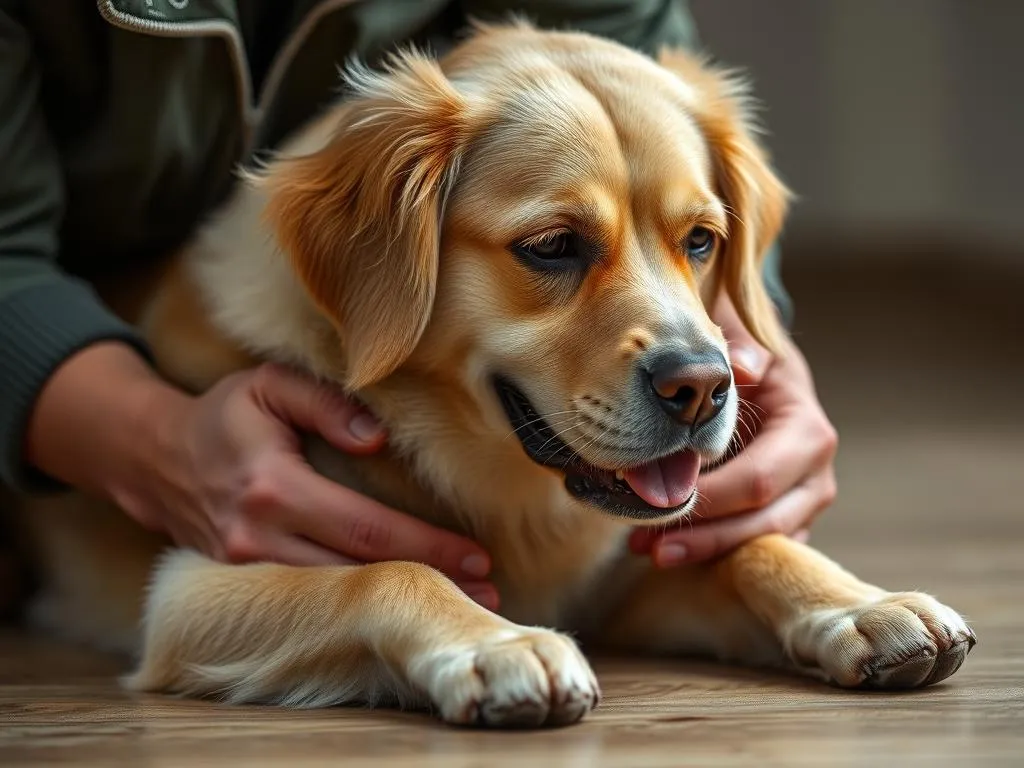
Introduction
The Heimlich maneuver for dogs is a crucial technique that every dog owner should be familiar with. Just like humans, dogs can choke on various objects, making it essential to know how to respond effectively in such emergencies. Common choking hazards can include everything from toys and food to bones that can splinter. Being prepared can mean the difference between life and death for your furry friend.
Understanding Choking in Dogs
What Causes Choking?
Choking in dogs can result from a variety of common items. Dogs are naturally curious and often explore their environment with their mouths. Some of the most frequent choking hazards include:
- Toys: Small toys or parts that can easily become lodged in a dog’s throat.
- Food: Large pieces of food, especially bones, can get stuck.
- Household Items: Objects like rubber bands, strings, or even pieces of clothing can pose a choking risk.
Certain factors can increase the likelihood of choking in dogs. For example, smaller breeds tend to have smaller throats, making them more susceptible to choking on larger objects. Additionally, younger dogs, known for their energetic play and tendency to chew on everything, are at a higher risk of choking incidents.
Signs Your Dog is Choking
Recognizing the signs of choking is vital for a swift response. Here are some physical symptoms to watch for:
- Gagging or Coughing: A dog may make gagging sounds or cough frequently.
- Pawing at the Mouth: If a dog is using its paws to scratch at its mouth, it may be trying to dislodge something.
- Difficulty Breathing: Listen for wheezing or labored breathing.
Behavioral changes can also indicate choking:
- Restlessness: A dog may seem agitated or unable to settle down.
- Anxiety: Signs of distress, such as whining or pacing, may be noticeable.
The Heimlich Maneuver for Dogs
Overview of the Heimlich Maneuver
The Heimlich maneuver for dogs is designed to expel an object that is blocking the airway. It works by creating a sudden rush of air that forces the object out, similar to the technique used on humans. However, the application differs slightly depending on the size of the dog.
Step-by-Step Guide to Performing the Heimlich Maneuver
For Small Dogs
- Assess the Situation: Ensure your dog is indeed choking and not just coughing.
- Positioning: Hold your dog with its back against your body.
- Form a Fist: Make a fist with one hand and place it just below the ribcage.
- Quick Thrusts: Apply quick, upward thrusts with your fist. Repeat until the object is expelled or your dog can breathe again.
- Check the Mouth: If the object is visible, carefully remove it.
For Medium to Large Dogs
- Assess the Situation: Confirm that your dog is choking.
- Positioning: Stand behind your dog and wrap your arms around its waist.
- Form a Fist: Make a fist and place it below the ribcage.
- Quick Thrusts: Perform upward thrusts with your fist, just like with smaller dogs.
- Check the Mouth: If you can see the object, attempt to remove it with your fingers.
Key Tips to Ensure Safety
- Stay Calm: Your demeanor can influence how your dog reacts.
- Avoid Pushing Down on the Abdomen: This can cause further injury.
- Do Not Use Force: If your dog becomes unconscious, you may need to switch to CPR.
When to Seek Professional Help
If the Heimlich maneuver for dogs is unsuccessful, it’s crucial to seek veterinary assistance immediately. Signs that you should visit the vet include:
- Persistent Gagging: If your dog continues to gag after the maneuver.
- Loss of Consciousness: If your dog becomes unresponsive.
- Breathing Difficulties: If there are ongoing issues, even after an object is expelled.
Even if your dog seems fine post-incident, a vet check-up is advisable. Internal injuries may not be immediately apparent.
Preventing Choking Incidents
Safe Chew Toys and Foods
Preventing choking is just as important as knowing how to respond. Here are some recommendations for safe chew toys and foods:
- Choose Size-Appropriate Toys: Ensure toys are the right size for your dog.
- Avoid Hard Bones: Opt for softer chew items that are less likely to splinter.
- Supervise Playtime: Always keep an eye on your dog while they are playing with toys or eating.
Training and Behavioral Tips
Training is an effective way to reduce the risk of choking. Here are some tips to keep in mind:
- Teach “Leave It” Command: This command can prevent your dog from picking up dangerous items.
- Practice Recall: Training your dog to come when called can help you remove objects before they cause harm.
- Avoid Feeding Practices that Encourage Rapid Consumption: Use slow-feed bowls if your dog tends to gulp their food.
First Aid and Emergency Care for Dogs
Additional First Aid Techniques
Besides the Heimlich maneuver for dogs, several other first aid techniques can be beneficial:
- CPR: Learning how to perform CPR on dogs can be life-saving if your dog becomes unconscious.
- Muzzle Use: If your dog is in distress, a muzzle may help prevent biting during an emergency. Never use a muzzle that restricts breathing.
Emergency Contacts and Resources
Having a plan in place is essential. Always keep your veterinarian’s contact information handy. Consider having the number of an emergency animal clinic available as well. Additionally, enrolling in a pet first aid course can provide valuable knowledge and skills.
Conclusion
The Heimlich maneuver for dogs is an essential skill that every dog owner should master. Being prepared and knowledgeable can save your dog’s life in an emergency. Responsible pet ownership includes understanding the potential risks and knowing how to respond effectively. By learning the Heimlich maneuver and taking preventive measures, you can ensure your furry friend stays safe and healthy.
FAQs
Common Questions About the Heimlich Maneuver for Dogs
What should I do if my dog is choking but I am not comfortable performing the Heimlich?
If you’re uncomfortable performing the Heimlich maneuver, try to remain calm and call for help. If possible, consult a vet or emergency animal clinic for guidance.
Can the Heimlich maneuver cause injury to my dog?
While the Heimlich maneuver for dogs is generally safe when performed correctly, improper technique can lead to injury. Always ensure you are familiar with the steps before attempting.
How can I tell if my dog is really choking or just coughing?
If your dog is making gagging sounds, pawing at its mouth, or showing signs of distress, it may be choking. If in doubt, err on the side of caution and attempt the Heimlich maneuver.
Are there any alternatives to the Heimlich maneuver for dogs?
In some cases, back blows or chest thrusts can help dislodge an object. However, these techniques should be used with caution and knowledge of proper application.
Understanding the Heimlich maneuver for dogs and preparing for choking incidents are vital for every dog owner. With the right knowledge and skills, you can be ready for emergencies that may arise.









